Introduction
Tinted car windows are more than just a stylish addition to your vehicle. They offer privacy, reduce glare, and protect your car’s interior from harmful UV rays. Regardless of how to maintaining the clarity and longevity of your car window tint requires proper care and cleaning techniques. This complete information is about keeping your tinted car windows in top condition, from the best Automotive Oil Film Cleaning brush products to use to the techniques that will help you avoid damaging the tint.
Recent Released: The Importance of a Regular Oil Change for Your Car True
What is automotive oil film cleaning brush Window Tint?
Before diving into automotive oil film cleaning brush methods, it’s crucial to understand what window tint is and how it works. Window tint is a thin film applied to the interior surface of your car’s windows. It comes in various types, including:
- Dyed film
- Metalized film
- Carbon film
- Ceramic film
Each type has its own properties and benefits, but they all require careful handling to maintain their effectiveness and appearance.
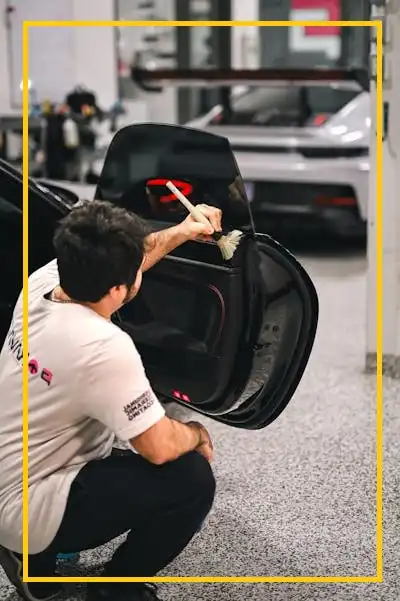
The Importance of Regular Automotive Oil Film Cleaning Brush
Why Clean Tinted Windows?
Keeping your tinted windows clean is essential for several reasons:
- Maintain Clarity: Clean windows ensure clear visibility while driving, which is crucial for safety.
- Preserve Tint Quality: Regular cleaning prevents the buildup of dirt and grime that can degrade the tint over time.
- Extend Tint Lifespan: Proper maintenance can significantly extend the life of your window tint.
- Enhance Appearance: Clean, well-maintained tinted windows contribute to the general attractives of your vehicle.
How Often Should You Automotive Oil Film Cleaning Brush?
The frequency of Automotive Oil Film Cleaning Brush your tinted windows depends on several factors, including your driving environment and local weather conditions. As a general rule:
- Clean your tinted windows every two weeks for optimal maintenance.
- If you live in a dusty area or frequently drive on dirt roads, you may need to clean them weekly.
- In regions with high pollution or during pollen season, more frequent cleaning may be necessary.
Choosing the Right Automotive Oil Film Cleaning Brush Products
Using the correct Automotive Oil Film Cleaning Brush products is crucial to avoid damaging your window tint. Here’s what you should and shouldn’t use:
Safe Cleaning Solutions
- Mild Soap and Water: A mixture of warm water and a small amount of dish soap is often all you need for regular cleaning.
- Specialized Tint-Safe Cleaners: Look for products specifically formulated for use on tinted windows.
- Vinegar Solution: A mixture of one part white vinegar to ten parts water can be effective for removing stubborn residues.
Products to Avoid
- Ammonia-Based Cleaners: These can break down the adhesive in the tint film, causing discoloration or peeling.
- Alcohol-Based Products: Like ammonia, alcohol can damage the tint and should be avoided.
- Abrasive Cleaners: Any product containing abrasive particles can scratch the tint.
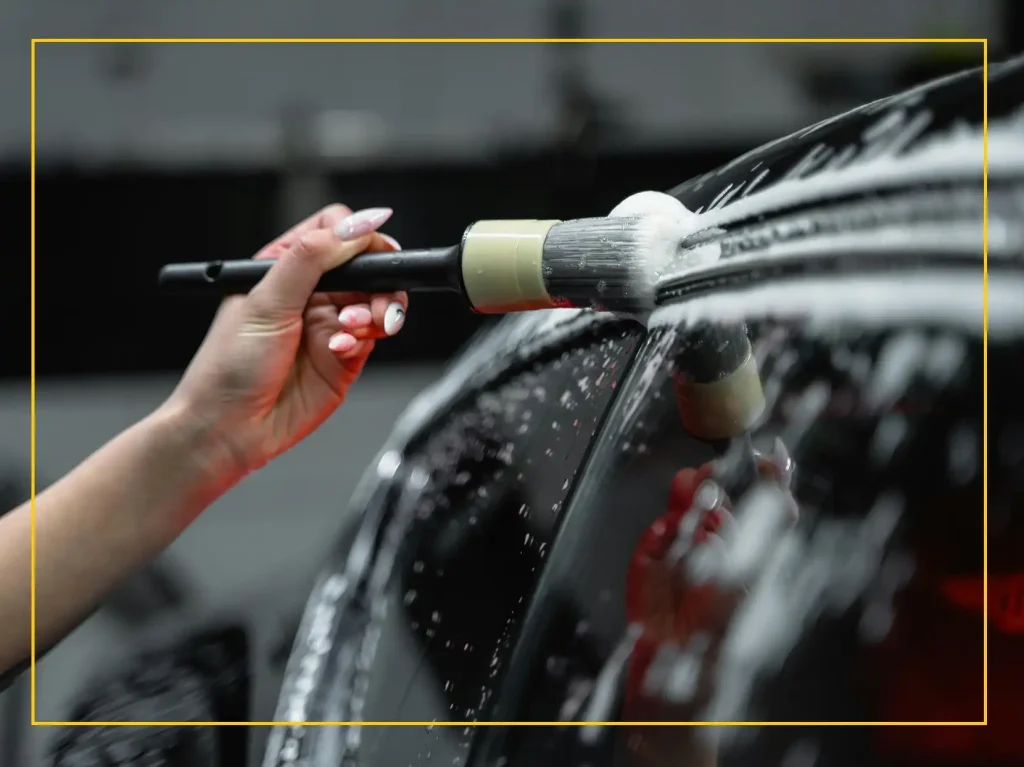
Essential Automotive Oil Film Cleaning Brush Tools
Having the right tools is just as important as using the right cleaning solutions. Here are the essential items you’ll need:
- Microfiber Cloths: These soft, lint-free cloths are gentle on tint and effective at trapping dirt.
- Soft Sponge: For applying cleaning solution without scratching the tint.
- Spray Bottle: For applying cleaning solutions evenly.
- Squeegee: A rubber squeegee can help remove excess water without scratching.
Step-by-Step Automotive Oil Film Cleaning Brush Process
Follow these steps to clean your tinted windows effectively and safely:
- Park in a Shaded Region: Avoid cleaning in direct sunlight, as this can cause the cleaning solution to dry too quickly and leave streaks.
- Remove Loose Dirt: Use a dry microfiber cloth to gently brush away loose dust and debris.
- Prepare Your Cleaning Solution: Mix your chosen cleaner according to instructions, or prepare a mild soap and water solution.
- Apply the Cleaner: Spray the cleaning solution onto a microfiber cloth or soft sponge, not directly onto the window. This prevents excess liquid from seeping under the edges of the tint.
- Clean from Top to Bottom: Gently wipe the window in a top-to-bottom motion to avoid streaks. Use light pressure to prevent damaging the tint.
- Rinse: If using soap, rinse the window with clean water to remove any soap residue.
- Dry Thoroughly: Use a clean, dry microfiber cloth to remove all moisture from the window. Pay special attention to the edges where water can accumulate.
- Final Buff: For a streak-free finish, give the window a final buff with a clean, dry microfiber cloth.
Dealing with Stubborn Stains
Sometimes, you may encounter stubborn stains that don’t come off with regular Automotive Oil Film Cleaning Brush. Here’s how to handle them:
- Identify the Stain: Different types of stains may require different approaches.
- Use a Specialized Cleaner: For oily residues, a degreaser safe for tinted windows may be necessary.
- Gentle Rubbing: Use a soft cloth and apply gentle, circular motions to work on the stain.
- Patience is Basic: Avoid the temptation to scrub harder. Instead, repeat the process several times if needed.
- Professional Help: For particularly stubborn stains, consider seeking help from a professional detailer who has experience with tinted windows.
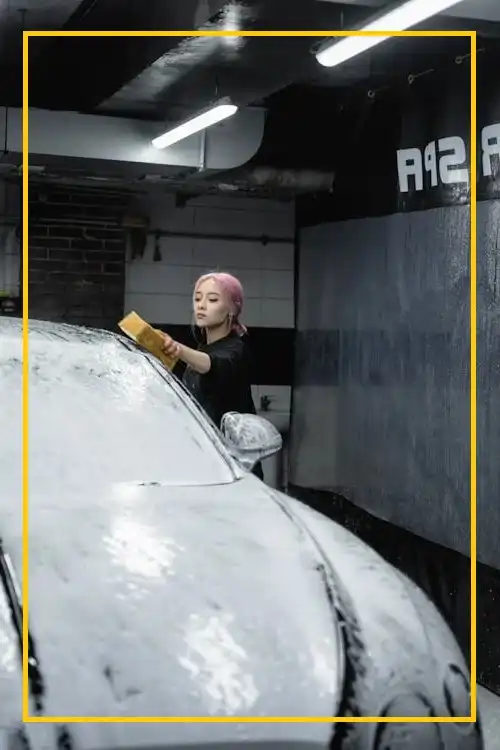
Maintaining Tinted Windows in Different Seasons
Each season brings its own challenges for maintaining tinted windows:
Summer
- Clean more frequently to remove pollen and insects.
- Be extra cautious about cleaning in direct sunlight to avoid rapid drying and streaking.
Winter
- Use a slightly warmer cleaning solution to help remove road salt and grime.
- Be gentle when removing ice or frost to avoid damaging the tint.
Spring and Fall
- Watch out for tree sap and bird droppings, which can etch the tint if left too long.
- Clean regularly to remove pollen buildup.
Common Mistakes to Avoid
When cleaning tinted windows, be sure to avoid these common pitfalls:
- Using Abrasive Materials: Never use paper towels, newspaper, or rough cloths that can scratch the tint.
- Applying Excessive Pressure: Gentle cleaning is basic to preserving the tint.
- Neglecting the Edges: Pay special attention to the edges of the tint where dirt can accumulate and cause peeling.
- Using Hot Water: Extremely hot water can potentially damage the adhesive holding the tint in place.
- Cleaning New Tint Too Soon: Wait at least a week after tint installation before cleaning to allow the adhesive to cure properly.
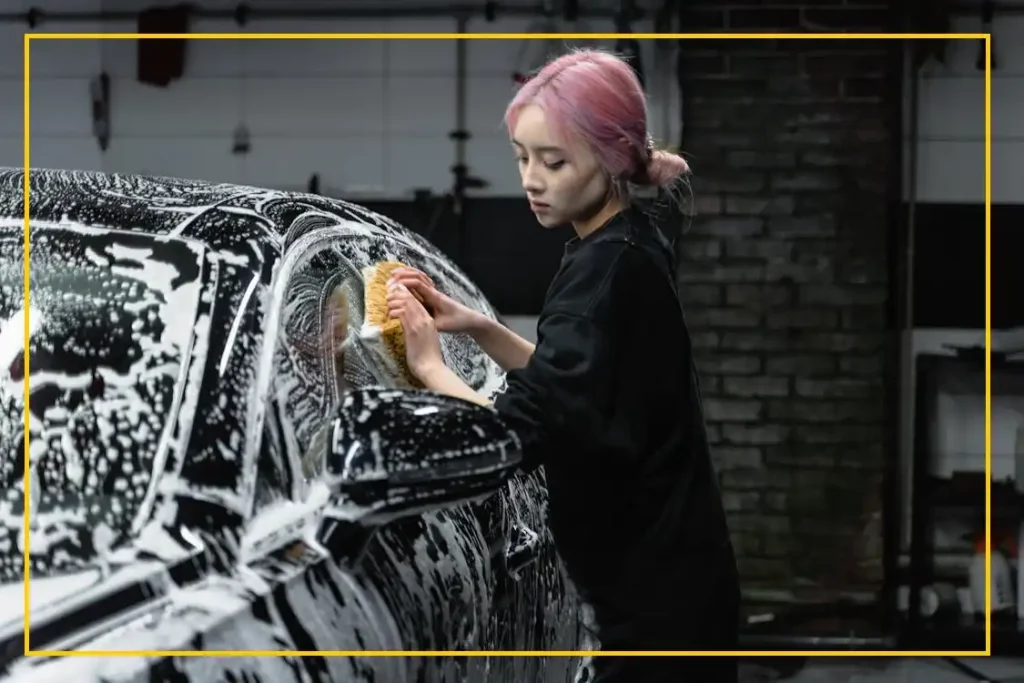
Professional Cleaning vs. DIY
While regular cleaning can be done at home, there are times when professional cleaning might be beneficial:
DIY Cleaning
- Suitable for routine maintenance
- Cost-effective
- Can be done on your schedule
Professional Cleaning
- Suggested for deep cleaning
- Beneficial if you notice any issues with the tint
- Can help identify and address potential problems early
Consider having your tinted windows professionally cleaned once or twice a year, for the most part if you live in an region with harsh environmental conditions.
The Role of Protective Products
There are products available that claim to protect tinted windows and make cleaning easier:
- Hydrophobic Coatings: These can help repel water and make it easier to remove dirt and grime.
- UV Protectants: Some products offer additional UV protection, which can help extend the life of your tint.
- Nano-Ceramic Coatings: These advanced products claim to provide long-lasting protection against scratches and stains.
While these products can be beneficial, it’s important to choose ones that are specifically safe for use on tinted windows and follow the manufacturer’s instructions carefully.
Troubleshooting Tint Issues
Even with proper care, you may encounter issues with your window tint over time. Here are some common problems and how to address them:
Bubbling
- Small bubbles may disappear on their own in warm weather.
- For persistent bubbles, consult a professional tint installer.
Peeling
- If you notice edges starting to peel, avoid picking at them.
- Have a professional re-seal the edges to prevent further peeling.
Purple Tint
- A purple hue often indicates that the tint is nearing the end of its lifespan.
- Consider having the tint replaced if this occurs.
Scratches
- Minor scratches might be buffed out by a professional.
- Deep scratches usually require tint replacement.
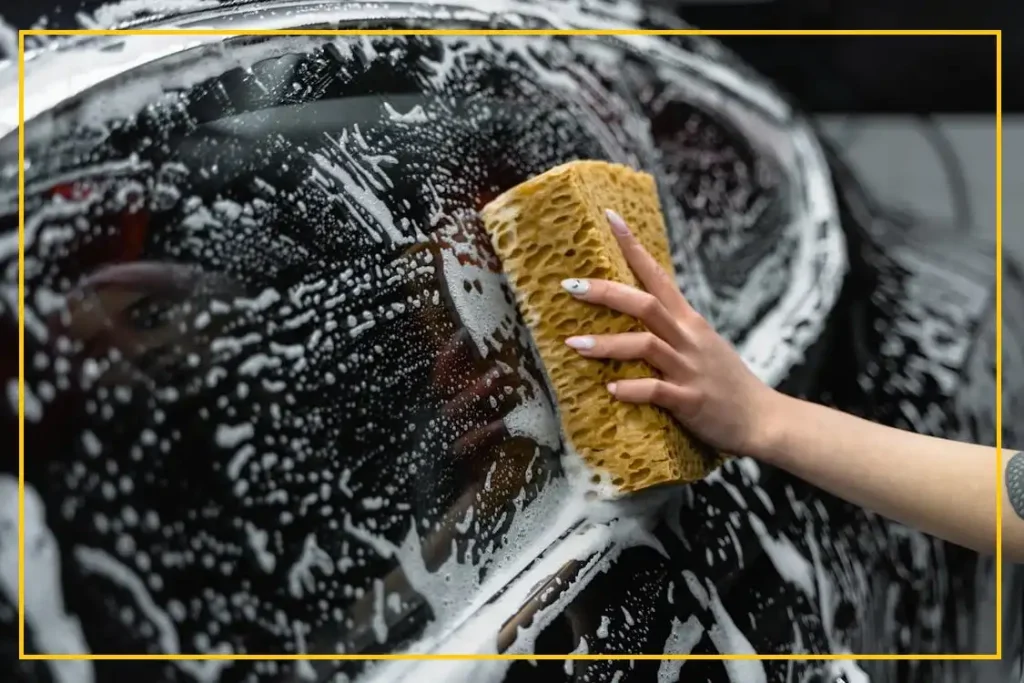
Comparative Table: Cleaning Methods for Tinted Windows
| Method | Pros | Cons | Best For |
| Soap and Water | Inexpensive, readily available | May leave streaks if not dried properly | Regular, light cleaning |
| Specialized Tint Cleaner | Formulated for tint safety, often leaves a protective layer | More expensive than household solutions | Routine maintenance, stubborn dirt |
| Vinegar Solution | Natural, effective on mineral deposits | Strong smell, may require multiple applications | Hard water stains, mineral buildup |
| Professional Cleaning | Thorough, can address tint issues | Expensive, requires scheduling | Annual deep clean, addressing tint problems |
As Per DeckersAuto
Maintaining clean and clear tinted car windows is an essential part of vehicle care. By following the guidelines you can ensure that your tinted windows remain in excellent condition, providing you with clear visibility, UV protection, and enhanced attractives for years to come. Think of the basic to successful tint maintenance lies in regular, gentle Automotive Oil Film Cleaning Brush using the right products and techniques. Whether you opt for DIY cleaning or professional services, treating your tinted windows with care will pay off in the long run, preserving both the functionality and appearance of your vehicle’s windows.
By incorporating these practices into your car care routine, you’ll not only enjoy the benefits of pristine tinted windows but also protect your investment in window tinting. Clean, well-maintained tinted windows contribute significantly to your driving experience, offering comfort, safety, and style. So, arm yourself with the right knowledge and tools, and give your tinted windows the care they deserve. Your future self will thank you for the clear views and long-lasting tint that result from your diligent maintenance efforts.
Best Car Window Tint In USA By DeckersAuto
Férarie Car Window Tint Luxury: Premium Window Tinting for Exotic Supercars
